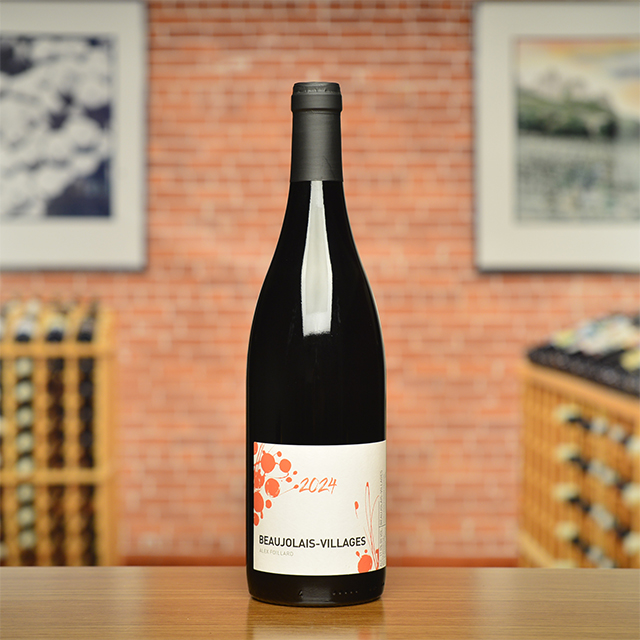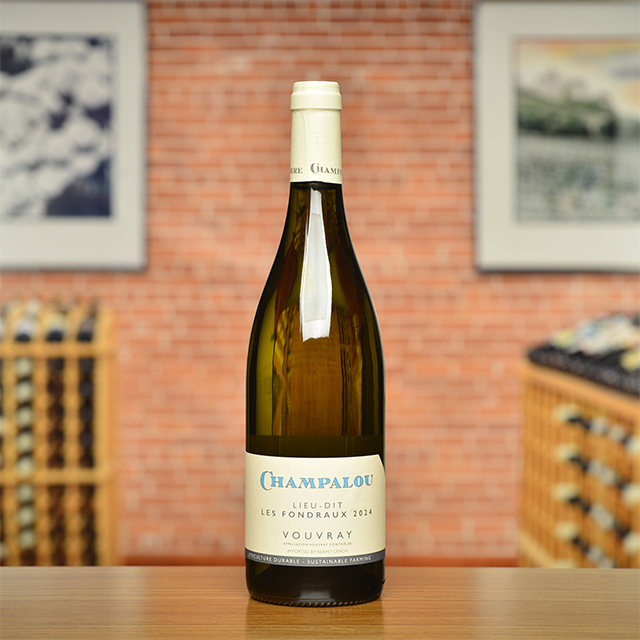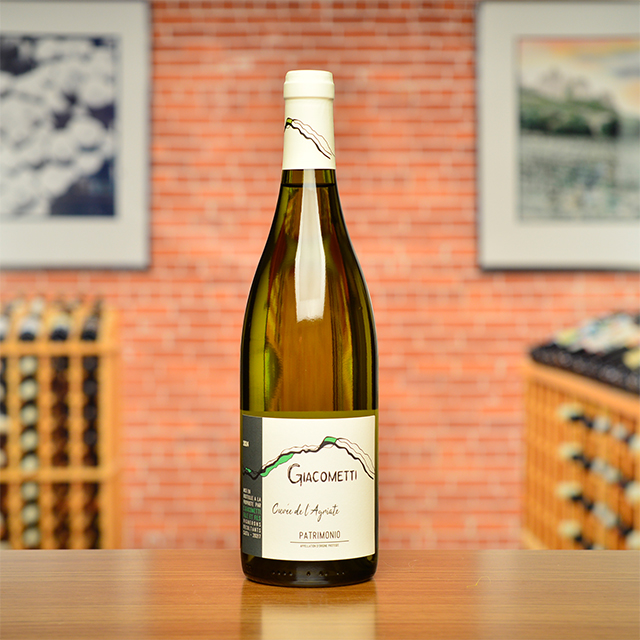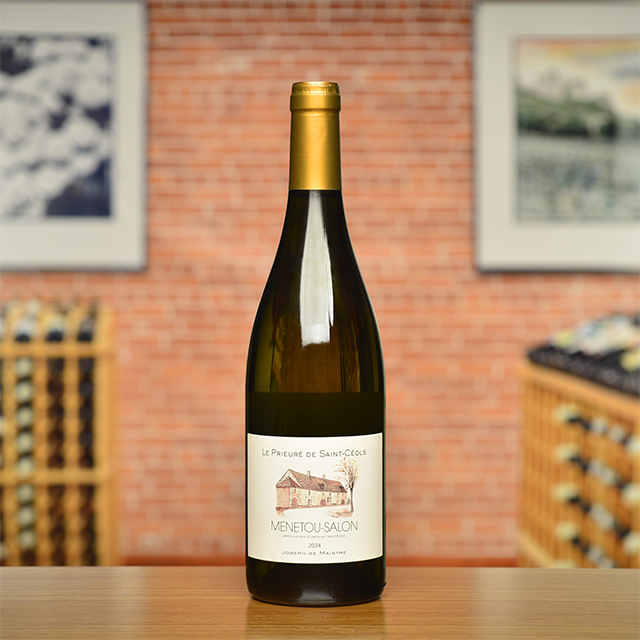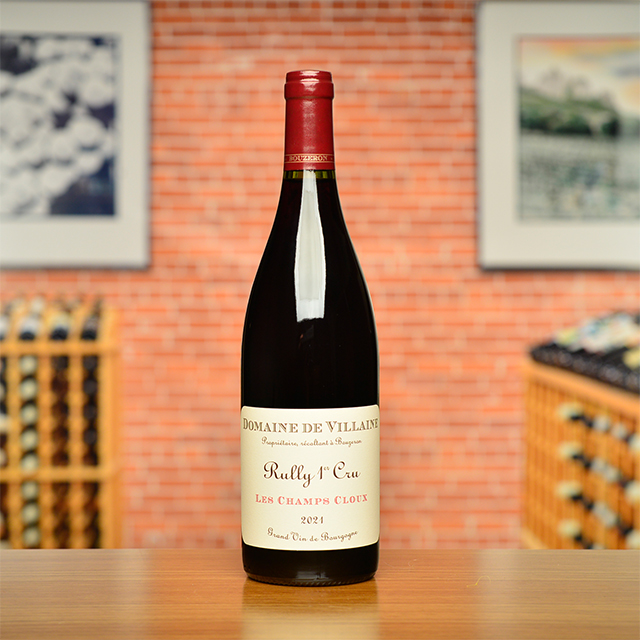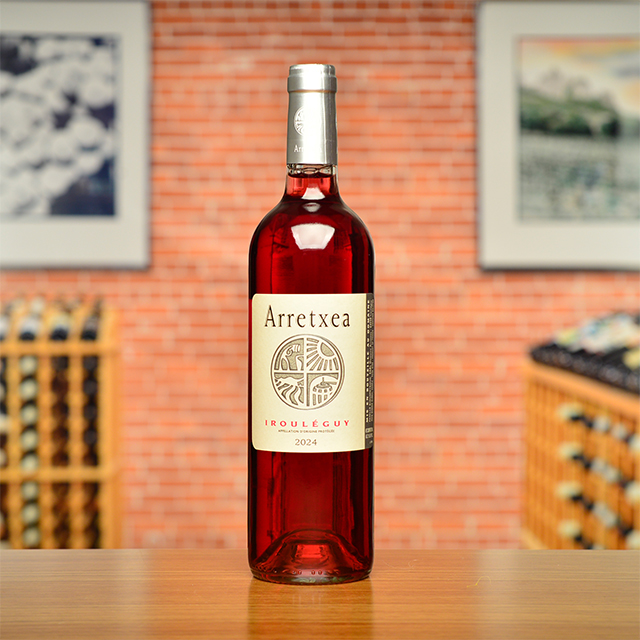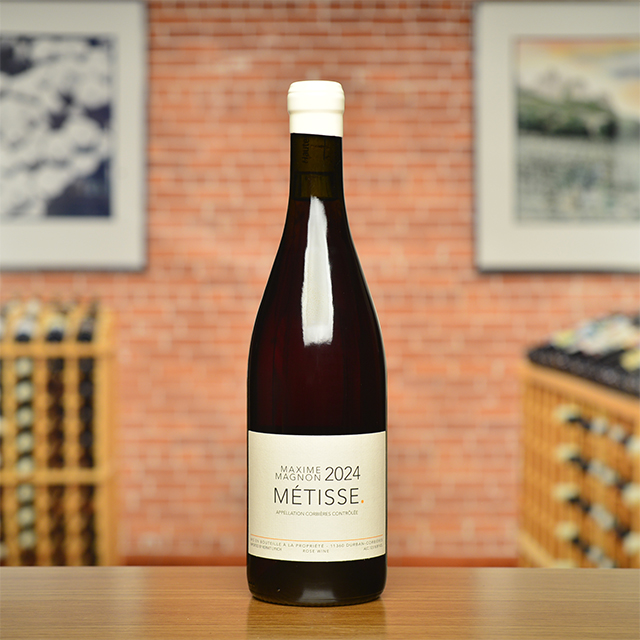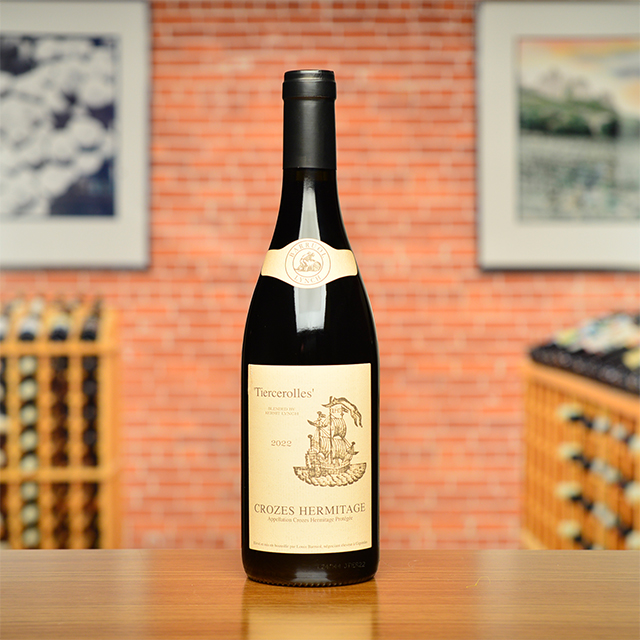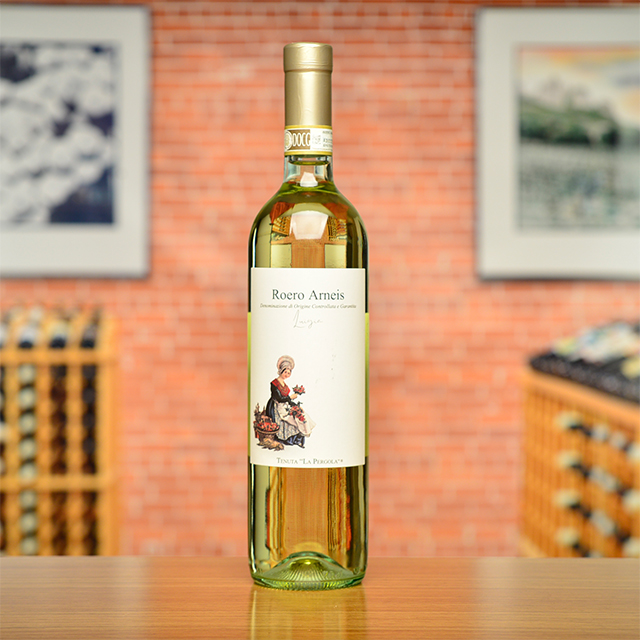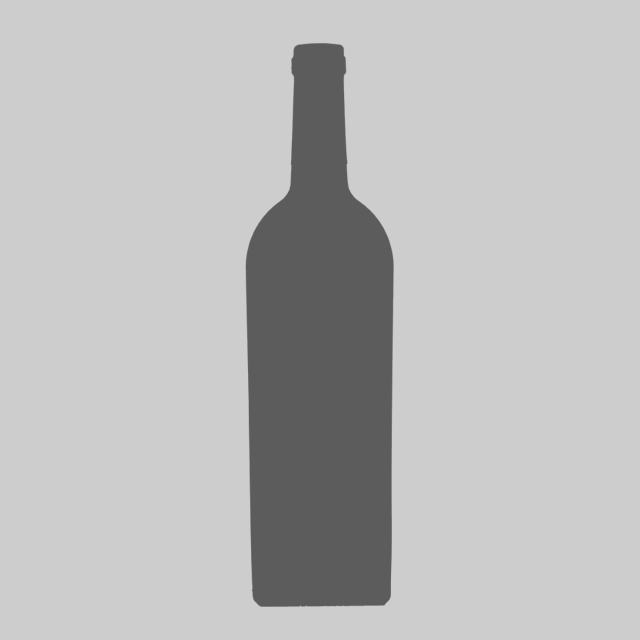
Receive our Monthly Newsletter and Special Promotions. Stay up to date on new arrivals, sales, and events at our Berkeley shop.
Celebrating 50 Years
Receive our Monthly Newsletter and Special Promotions. Stay up to date on new arrivals, sales, and events at our Berkeley shop.

Celebrating 50 Years
Table of Contents
- Introduction
-
July | From the Archives: Petit Chablis
June 1983 Newsletter by Kermit Lynch - July | Looking Forward: Lavantureux by Anthony Lynch
-
June | From the Archives: 1997 Domaine du Gros Noré
October 1999 Newsletter by Kermit Lynch - June | Looking Forward: Vigneti Vecchio by Anthony Lynch
-
May | From the Archives: Confessions of a Water Drinker
June 1996 Newsletter by Wendell Berry - May | Looking Forward: Domaine de l’Alliance by Dixon Brooke
-
April | From the Archives: Aldo Conterno
1978 Barolo (February 1982 Newsletter) by Kermit Lynch - April | Looking Forward: Giulia Negri by Anthony Lynch
-
March | From the Archives: Nicole Chanrion
September 1996 Newsletter by Kermit Lynch - March | Looking Forward: Grottafumata by Anthony Lynch
-
February | From the Archives: Typicity
March 1992 Newsletter by Kermit Lynch - February | Looking Forward: Clos Saint-Joseph by Anthony Lynch
-
January | From the Archives: Henri Jayer
VITICULTEUR À VOSNE-ROMANÉE (CÔTE-D’OR) by Kermit Lynch - January | Looking Forward: Clos Larrouyat by Anthony Lynch
- November | Looking Forward: La Marca Di San Michele by Dixon Brooke
- August | Looking Forward: Domaine Giacometti by Anthony Lynch
-
October | From the Archives: Bargain Of The Year?
Bargain Of The Year? by Kermit Lynch -
October | Looking Forward: Le Sang Des Cailloux
Le Sang Des Cailloux by Anthony Lynch -
September | Looking Forward: I Pástini
I Pástini: Newly Arrived from Puglia by Anthony Lynch -
September | From the Archives: Tempier Rosé
Tempier Rosé Through The Years by Kermit Lynch -
August | From the Archives: Summer Rosé
August 1983 Newsletter by Kermit Lynch
1972, it began; 2022, it continues. This is not an epitaph. KLWM is alive, well, and all of us are proud to celebrate fifty years of bringing you...
1972, it began; 2022, it continues. This is not an epitaph. KLWM is alive, well, and all of us are proud to celebrate fifty years of bringing you the best wines France and Italy have to offer. To honor this milestone, we’re taking a trip down memory lane in each of this year’s brochures, looking back in our archives at some of the incredible domaines we’ve had the pleasure to work with. On a similar note, we will also be highlighting newer imports that really get our taste buds excited in “Looking Forward” segments, anticipating who will be the future stars of the portfolio. Don’t miss ’em!
Thanks for making our adventures on the wine route possible. Here’s to fifty more years! —Kermit, Anthony, and Dixon
In terms of quality, a well-vinified Petit Chablis is preferable to a poorly made Chablis. Don’t let the petit scare you away from th...

In terms of quality, a well-vinified Petit Chablis is preferable to a poorly made Chablis. Don’t let the petit scare you away from this little lovely. The difference between Chablis and Petit Chablis in terms of geographical placement can be a matter of meters—the space between two rows of vines—and they are produced from the same grape.
Petit is not necessarily a derogatory word in France. However, it does indeed announce that the wine is not a grand one—this Petit Chablis, for example, does not have the depth or aging potential, the magnificence of the Raveneau wines offered on the next page, nor does it have the price of the Raveneau wines. Nor is it intended to be served when a great bottle is required. It is a little wine, but little wines can be full of charm and deliciousness. Above all, they should be fun to drink.
The small, rustic cave of Monsieur Lavantureux is outside the village of Chablis off the beaten path in Lignorelles where every house seems to boast a chien méchant and everyone stops and stares at a stranger’s car as it passes.
His 1982 Petit Chablis is all Chardonnay with an impeccably fresh, pretty Chablis nose. It is bone-dry, of course, with a lively, supple character. It is a wine to drink now, this summer, and over the next two years. Aging will not improve it. You want it for its freshness, its nervosity and charm.
If it were shipped to California under normal conditions, I could not recommend a little wine like this Petit Chablis—its delicate perfume and vitality would vanish in the heat of the passage through Panama. But shipped at a controlled temperature, you have the wine in perfect condition. Enjoy! —June 1983
When I first joined the squad at the Berkeley retail shop more than ten years ago, we had only two Lavantureux cuvées to offer: Chablis and Peti...

When I first joined the squad at the Berkeley retail shop more than ten years ago, we had only two Lavantureux cuvées to offer: Chablis and Petit Chablis—benchmarks of our Burgundy portfolio since the mid-’80s. Staff and clients alike adored the wines for their reliable consistency from bottle to bottle and year to year, as well as for the unmistakable Chablis character they expressed so vividly.
Soon thereafter—coinciding with founder Roland Lavantureux’s sons, Arnaud and David, joining the domaine—we began to receive new offerings: a few cases of the dense and steely grand cru Vaudésir, then a shipment of charming, perfectly balanced premier cru Fourchaume. The new wines showed off the family’s hunger to fill out their lineup with a diverse collection of more serious and long-lived bottlings, and they also took on levels of depth, complexity, and flavor intensity we had not yet tasted from Lavantureux, without ever losing their Chablisien typicity.
My subsequent tastings at the domaine with Arnaud and David confirmed that they, like their close friends Isabelle and Maxime Raveneau, represent the future of Chablis. Beyond the brilliance of each release—you’ll find layers of elegant fruit, pristine transparency from site to site, and Kimmeridgian minerality in spades in each bottle—it is their humble, studied approach to the craft that is most striking. Their judicious hand with oak aging, or the composed way in which they have dealt with an increasingly capricious climate, sets them apart in Chablis and beyond. The brothers’ new venture with Pinot Noir, which has resulted in a luminous, stony rouge from vines planted by their grandfather in nearby Epineuil, is simply the cherry on top.
The following Lavantureux cuvées have just landed in Berkeley:
Buy this collection 9 bottles
The winemaker is Alain Pascal, a living, breathing hunk of Provence. This 1997 is his domaine’s debut bottling. Alain’s fat...

The winemaker is Alain Pascal, a living, breathing hunk of Provence. This 1997 is his domaine’s debut bottling.
Alain’s father, who planted the vineyard at La Cadière d’Azur, was named Honoré. Locals called him Noré for short. He was a massive, broad-backed fellow. I remember seeing him around. How could anyone forget seeing him? He seemed to fill the landscape. Alain inherited his dad’s chiseled features, fit for a Provençal Mt. Rushmore. And Alain named his domaine after his dad. Gros Noré. Big Noré.
Several times this summer I crossed the little valley that separates my house from his. He’s a hunter, too, so along with the wines I have been served bloody, barely cooked little birdies (you are supposed to eat them crunchy bones and beaks and all), delicious homemade pâtés, and a sickeningly flavored leg of wild boar that I could barely cut through with knife and fork, much less chew, much less (gag) swallow. Folks, I do it for you, to score for you that rare prize, a natural wine.
Alain is a naif when it comes to wine. He does not know where Chablis is, for example. And he thinks Côte-Rôtie is a blend of Syrah and Mourvèdre! But you should see the look on his face, the glow, the boyish excitement when he runs off to find us an old bottle he and his father made for their own drinking. (They sold most of their grapes to domaines Pibarnon and Ott and the local cooperative.) It is rustic, oh yes, rustic in the good sense. Of this earth, of this sun. Those older bottles, 1993, 1989, 1985, are totally convincing Bandols. He loves big, old-fashioned wines and seems pretty happy to have found a client who wants to buy the kind of wine he likes to make. —October 1999
Vigneti Vecchio is one of three small growers we recently introduced from Mount Etna. The name is a reference to the family name of Carmelo Vecch...

Vigneti Vecchio is one of three small growers we recently introduced from Mount Etna. The name is a reference to the family name of Carmelo Vecchio, who runs the farm with his wife, Rosa La Guzza, as well as a nod to the ancient vines that make up their holdings. Here in Solicchiata, on the volcano’s northern face, Carmelo and Rosa farm a collection of contrade—the rough equivalent of Burgundian climats—while Etna’s steaming summit looms majestically overhead, setting a striking stage for the creation of fine wines.
Vigneti Vecchio’s white had me mesmerized from the very first pour. It defied categorization: a few days of skin contact provided real depth and aromatics I had never encountered, and it elegantly toed the line between rich oxidative textures and smoky reduction. Its mouth-filling opulence did not overshadow its mineral freshness. The 2020 Sciare Vive bianco, with its scents of wild yellow blossoms and sun-ripened stone fruit, echoes the novel delight I found in that first taste.
The three reds Carmelo and Rosa bottle mirror the singular nature of their white. From the suave, velvety Sciare Vive rosso—named for the solidified lava flows that scar the Etnean landscape—to the robust and gritty Contrada Crasà—which features the commanding structure of a Barolo, and promises to age like one—they are interpretations of Etna brimming with Sicilian soul and captivating markers of a great terroir.
They even speak to local history: The Donna Bianca bottling, for instance, is curious for its high percentage of Grenache. As it turns out, Admiral Horatio Nelson was awarded dukedom in 1799 in nearby Bronte for helping to defend Sicily from Napoleon’s army. He hired a French viticulturalist to plant vineyards, and as a result, Grenache found an unlikely home high on Etna. Sourced from a tiny parcel littered with pumice at 820 meters elevation, Donna Bianca is a silky testament to this heritage with fragrant reminders of violets, incense, and blood orange. Vigneti Vecchio’s wines capture everything we love about Etna, and we are savoring the fine vintages already released by this young estate while relishing many more that are sure to come.
Buy this collection 4 bottles
I had better begin by saying that I am primarily a water drinker. There are many pleasures in drinking water, the chief of which are to be f...
I had better begin by saying that I am primarily a water drinker. There are many pleasures in drinking water, the chief of which are to be found in a thermos jug, well-iced, when you’re working outdoors on a hot day. But I don’t mean just any water. I mean water with character and clarity, unmedicated, from a familiar source. For me, one of the happinesses of homecoming is a drink from my own cistern. Likewise, I love to drink the milk of a Jersey cow with whom I am personally acquainted.
Probably I will never become as much a connoisseur of wine as I am of drinking water and cow’s milk, but I do take pleasure in good wine. As soon as you realize that some wines are better than others, you have the possibility of pleasure that you can think about, before and after. My own thoughts about wine improved a great deal after I read Kermit Lynch’s Adventures on the Wine Route. All of a sudden, I saw much clearer than I had before how my interest in wine could be accommodated to my interest in good agriculture. Adventures on the Wine Route is, among other things, a fine book on agriculture. One of the best, really, for its interest is in the way the quality of place and soil and work are communicated to the quality of the final product. When these qualitative linkages are intact and are known, the result is a kind of trust that increases pleasure. Drinking wine from a good little vineyard such as Kermit describes and patronizes is like eating vegetables from a fertile, familiar garden, or lamb from the flock of an excellent shepherd whom you know. The immediate pleasure of taste is enlarged and enhanced by the pleasure that one takes in the life of the world and the husbandry of the soil.
An example of what I mean was in one of the recent Kermit Lynch catalogues. Kermit, visiting Isabelle and Matthieu Champart, discovered that they were selling some of their grapes. And then the following exchange took place:
“I proposed that they stop selling any of their grapes, that I could handle a much larger quantity of their Saint-Chinian wine if more were available.
“Isabelle looked troubled . . .
“ ‘But then, Kermit,’ she said finally, ‘the quality would not be the same. We are using only our best grapes for our own wine.’ ”
Well, immediately I wanted to try a bottle of Saint-Chinian. Trust and a certain pleasure were already in place. I was ready to take a chance on the quality. —June 1996
Daniel Alibrand and his wife, Valérie, are making some of the most exciting wine in Bordeaux today. The fact that all of their wine is white mak...
Daniel Alibrand and his wife, Valérie, are making some of the most exciting wine in Bordeaux today. The fact that all of their wine is white makes their family domaine even more unique and special in this renowned region. The Alibrands tend their small plots of vines in the Sauternes appellation organically and meticulously, and while their bottlings of sweet wine have become rarer, their dry whites have thankfully multiplied, giving wine lovers even more beautiful creations to seek out and experience. You will never view Bordeaux blanc through quite the same lens after tasting these appellation- and perception-bending wines.
Buy this collection 4 bottles
Wines in this Collection
Last spring I had the good fortune to accompany Burton Anderson through the Piemonte. Author of Vino, Anderson was touring the cellars to researc...

Last spring I had the good fortune to accompany Burton Anderson through the Piemonte. Author of Vino, Anderson was touring the cellars to research an article on that picturesque, mountainous region which gives us Barolo, Barbaresco, Dolcetto, and the finest Barbera of Italy.
Thanks to the esteem the vintners have for Anderson, I tasted countless beautiful wines, got a good look at the 1978 vintage, but saw nothing to shake my conviction that in Vietti and Aldo Conterno we have the two producers who are making the best Piemonte wines today.
Aldo Conterno wouldn’t settle for less. He works from pride.
By coincidence Aldo lived in the Bay Area for a few years and has relatives here. He knows that they buy his wines in the shop.
Only wines of unquestioned excellence are offered on a pre-arrival basis, and in exchange for advance orders we offer a low price. Conterno’s 1978 Barolo merits this special pre-arrival offer.
The 1978 vintage is finer than the 1971 and 1974. It produced big wines which will provide pleasure for decades. Oh if I could sell you his ’53 Barolo right now—that’s the job I want!—but the way the wine market is now, you’ll have to cellar this one and wait on it.
It’s as dark as blackberry juice. Big deep aroma; roast coffee bean, violets, and heaps of berry-like fruit. A rich wine, almost 15° alcohol, but it is not at all raw or vulgar. Instead the impression is one of tremendous depth of flavor, perfect ripeness, and great style. The harmony of tannin, acid, and fruit is reminiscent of the great Côte de Nuits Burgundies. The wine, in a good cellar, will endure and evolve indefinitely.To read about our newest producer from Barolo, Giulia Negri, read Anthony Lynch's piece here.
It was a swampy summer afternoon in Beaune (yes, it does get hot in Burgundy from time to time) when I first tasted Giulia Negri’s wines. Not t...

It was a swampy summer afternoon in Beaune (yes, it does get hot in Burgundy from time to time) when I first tasted Giulia Negri’s wines. Not the ideal conditions to best appreciate young Barolo, you might think, and you’re entirely right—a kir or an ice-cold pilsner would have been a more refreshing choice that day. But being professionals, my colleagues and I did our due diligence, and through beads of sweat, we sampled the creations of a young woman from La Morra, a commune reputed for the elegance and ethereal perfume of its Nebbiolo.
Several months later, I found myself standing in Giulia’s cellar, swirling a wine grown from the highest vineyards of the entire Barolo appellation. Surpassing five hundred meters in elevation, the cru Serradenari represents the future of Barolo in a warming world, and the same could be said about Giulia. Barely into her thirties, she already boasts a handful of impressive vintages under her belt, and her respect for the region’s traditional winemaking practices such as extended macerations and aging in large casks allows her to draw the most from what is decidedly a special site.
A Burgundy fanatic—a trip to the Côte d’Or proved to be the spark that definitively ignited her passion for fine wine; she would return no less than six times that same year!—Giulia has extensively studied the subtleties of her own terroir, searching for the nuances responsible for diverse expressions of Nebbiolo within her holdings. From sandy clay soils, she fashions the generous, silky Tartufaia, a Barolo bestowing immediate pleasure through its gentle fruit and harmonious tannin. Higher upslope, on sand and marl, she crafts the beautifully pure, lifted Serradenari, its high-toned floral notes delivered with pinpoint precision. And then, from a small limestone plot at the very top of the whole appellation, there is Marassio: a dense, earthy Barolo reminiscent of wild fruit and spice, whose chalky tannins grip the palate in a stunning display of power and finesse.
We can’t speak highly enough of this newcomer who has burst onto the scene in Piedmont. Pulling one of her aged Barolos from your cellar in several years’ time is sure to be a momentous occasion.
Buy this collection 3 bottles
Wines in this Collection
If I did not like my other Beaujolais producers so much, I would tell you that Nicole Chanrion makes the best of them all, because when you ...

If I did not like my other Beaujolais producers so much, I would tell you that Nicole Chanrion makes the best of them all, because when you have your nose in a glass of hers, you cannot imagine any other Beaujolais possibly surpassing it. And it is such glorious WINE, you know, so essentially, definitively wine-like.
The aroma of her 1995 is super, a mixture of red fruits like raspberry and cherry, but above all crushed fresh strawberries, you know, the way it would smell if you picked up a bunch of fresh strawberries in your hands and mashed them up right under your nose. Forget any prejudice about wimpy Beaujolais. This aroma is macho. And it rises regally out of a solid, intense structure. This is typical Chanrion. One of a kind. And so swallowable. (Swallow two glassfuls and say swallowable five times as fast as you can.)
To read about the 2020 Côte-de-Brouilly from Nicole Chanrion, read Dixon Brooke’s piece here.
We can finally answer this question thanks to the latest release from Grottafumata, a dynamic young estate run by Mauro Cutuli and Mariangela Pre...

We can finally answer this question thanks to the latest release from Grottafumata, a dynamic young estate run by Mauro Cutuli and Mariangela Prestifilippo. Never did we think, upon tasting their stellar olive oil several years ago in a wine bar on Mount Etna, that we would be dealing with a rising star of Sicily’s winemaking scene. But when Mauro reached out the following year to let us know the couple had vinified their first Etna bianco and rosso, we couldn’t refuse a tasting.
Grottafumata is, in a sense, the antithesis of many of the changes Etna has seen in recent times. As multinational wine brands have settled looking to cash in on the Etna name, bulldozing vast swaths of land in preparation for planting and erecting super-wineries overnight, Mauro and Mariangela have gone back to the roots. They painstakingly sought out great vineyard sites planted to old vines, making deals with old contadino farmers no longer interested in working the steep land. They grow the fruit organically and vinify it naturally in rented cellar space, and the results—tiny volumes of wines infused with Etna’s exotic, smoky aura—speak for themselves.
Grottafumata’s 2019 rosso showcases Nerello Mascalese up to one hundred years old, fermented and aged in tank, bottled unfiltered with barely any sulfur. We’ve heard of Etna reds being called “Burgundian,” and comparisons with Barolo are not unfounded, but what about Beaujolais? Featuring the silky, juicy texture and brightly perfumed red fruit of great cru Beaujolais along with the volcanic grit of old vines rooted deep in decomposed lava stone, this is an irresistibly joyful expression of Etna, unlike any other we have tasted.
If the word typicity does not exist, it should. Imagine, you want a baguette with dinner so you buy one, carry it home, and when you tear into it...

If the word typicity does not exist, it should. Imagine, you want a baguette with dinner so you buy one, carry it home, and when you tear into it you find it full of cinnamon and dried apricots. Tasty or not, you are stuck with a baguette that lacks typicity. When I want a Châteauneuf-du-Pape, that means something; when I uncork it, I want it to taste like Châteauneuf-du-Pape, to express Châteauneuf-du-Papeness. Or Châteauneuf-du-Papicity?
The wine world’s grandest achievement (which will never be matched by the upcoming “United Nations of Oaky Cabernets and Chardonnays”) remains France’s system of appellation contrôlée, which was constructed to define and preserve the work of centuries of trial and error that resulted in the right grape varieties and vinification for each region’s soil and climate. In my cellar you will not find any Pinot Noir from Bandol or Cabernet from Tuscany.
Châteauneuf-du-Pape boasts a very special terroir. You have now seen photos of those amazing stones, called galets, those rounded, colorful stones that you can smell and taste in a Vieux Télégraphe. There is also that blessed climate. The summer air is warm, fecund, and intoxicating, and there is the mistral, Provence’s supernatural grape dryer, which prevents mildew and rot.
Traditional vinification also contributes to the typicity of Vieux Télégraphe. No Châteauneuf-du-Pape tastes as much like Châteauneuf-du-Pape as Vieux Télégraphe, and that is its reputation in Châteauneuf-du-Pape! You can make a good wine by departing from traditional vinification, by carbonic maceration, by heating this or cooling that, by buying Bordeaux barrels or whatever your little heart desires, but your Châteauneuf-du-Pape will lack typicity.
To read about the 2019 Vieux Télégraphe and Kermit’s notes on the 1989 vintage, read Dixon Brooke’s piece here.
Today I had the Clos Saint-Joseph blanc. I imagine if François Raveneau had made wine there, his blanc would have tasted like Roch’s. What a p...

Today I had the Clos Saint-Joseph blanc. I imagine if François Raveneau had made wine there, his blanc would have tasted like Roch’s. What a pure expression of that fabulous terroir. Filtered by the stones.
Never did I expect my father would liken a humble Provençal white to what is probably his favorite white wine of all time, Raveneau’s Chablis. But this is no ordinary Provençal white, Villars-sur-Var is no ordinary terroir, and Roch Sassi has proven, in the few years since we began working with him, his capacities as a truly extraordinary vigneron.
Our story begins in 2017, when we exited the autoroute at Nice and followed the Var River due north through a narrow canyon cut through layer upon layer of limestone. These veritable walls of rock had been folded into mesmerizing patterns, attesting to millions of years of geological activity as tectonic plates crunched together and birthed the mighty Alps. After thirty minutes or so, an opening in the valley revealed stony riverbanks covered in vineyard rows, signaling our arrival in Villars.
Surrounded by towering peaks, this isolated medieval village is home to a modest thirty hectares of vines, of which five belong to Roch. Besides being made from the same grape varieties, his wines share little in common with anything else you’ll encounter from the vast Côtes de Provence AOC. First, the Alps exercise a decisive influence on soil and climate, manifested by the abundance of limestone scree and cold air currents tempering the Mediterranean warmth. Second, his methods reflect a winemaking philosophy diametrically opposed to the commercial direction much of Provence has been guilty of taking in recent times.
The very first whiff of his graceful, vibrant rosé illustrated this in mouthwatering fashion. A rosé defined by terroir, and not by technique?! With similar precision and that filtered-through-stones finish, Roch’s blanc echoes what we loved about the rosé, while the purity and restraint of his old-vine rouge personify the generosity of Provence viewed through an Alpine lens. Lastly, with its dense wild fruit and suave floral nuances, the Syrah stands tall among the great cool-climate expressions of the grape. Don’t sleep on Clos Saint-Joseph—it’s a side of Provence rarely seen.
A client pointed at the two or three stacks of red Burgundy in the shop and asked, “You used to specialize in Burgundy, didn’t you?” ...

A client pointed at the two or three stacks of red Burgundy in the shop and asked, “You used to specialize in Burgundy, didn’t you?”
I’ve spent more time tasting in Burgundy than in all other wine regions put together. Burgundy remains the king of wines in my vinous aristocracy. If you ask me, I specialize in Burgundy.
However, I’m choosier than I used to be. Certainly this is a logical consequence of the formidable prices in Burgundy. The wine in the bottle must be worth its price no matter what it says on the label. But at the same time, discovering the wines of Hubert de Montille in Volnay changed my aesthetic approach to Burgundy. Sloppy vinification and dishonest wines bug me. I’d rather drink de Montille’s simple, flawless Bourgogne Rouge than a chaptalized, filtered (and often stretched) Grand Cru. Because, as a favorite California vintner from Forestville put it, “de Montille doesn’t screw ’em up!”
All this to introduce a new hero, Henri Jayer of Vosne-Romanée, the most important discovery I’ve made in Burgundy since de Montille. Jayer shows a passion, intelligence, and integrity similar to de Montille, but works with crus from the Côte de Nuits such as BEAUMONTS and RICHEBOURG.
Each cru tastes different. He doesn’t manipulate them to impose a “house-style.” His Echezeaux has that thick, exquisite Echezeaux stink. The Nuits has a toasty, earthier complexity. He allows the character of the cru to express itself. When buying a Burgundy it is, after all, the character of the cru, the personality imparted by that specific piece of earth, that one is paying for. One hopes it has not been filtered out or sugared over.
Jayer’s wines are not filtered, they are fined lightly with egg whites. They are vinified in new oak. They show no chaptalization (sugaring to increase body and alcohol). Consequently the wines are alive; flavors are not masked; the structure of tannin and acid is not at all obscured. One luxuriates in the flavor of the Pinot Noir fruit, the nobility of the terroir, and the subtle, toasty quality imparted by the oak—the ingredients from which Burgundy should be made. —Kermit Lynch, June 1980
To read about some of our current domaines from Burgundy, read Dixon Brooke's Familial Burgundy piece here.
Among our most inspiring recent discoveries is undoubtedly Clos Larrouyat, a small domaine my dad and I came across on a recent trip to the Southwest....

The region of Le Marche, on Italy’s Adriatic coast directly east of Tuscany, is an interesting case study for this month’s installment of “Looki...

The region of Le Marche, on Italy’s Adriatic coast directly east of Tuscany, is an interesting case study for this month’s installment of “Looking Forward.” While wine history is abundant here and Verdicchio is no stranger to wine drinkers worldwide, a small estate intent on organic farming and bottling its own production with exacting quality standards is still an exception to the rule in this part of Italia.
Le Marche is a less-traveled area simply due to its geographic location, even though its terroir is world class, particularly in this historical subzone near the fortified hilltop town of Jesi. Grape has been matched to soil perfectly and persuasively, and the combination is uniquely suited to making exceptional white wines. La Marca proudly represents the new generation to follow in Le Marche.
The Bonci family’s quest for improvement every single year has been inspiring to follow. A great example of this is their incredible col fondo Verdicchio that we’ve brought in over the past few years—the exceptional product is one of the best sparkling wines I have ever tasted from Italy. The star of their show is the Passolento bottling, a full-bodied dry white that redefined the potential of Verdicchio for me. Le Marche is now one of my top go-to regions in Italy for reliably high-quality white wine, thanks in large part to this domaine.
When my father first made the hop over to Corsica, he found an island brimming with potential. More than forty years later, the scene has changed quit...

When my father first made the hop over to Corsica, he found an island brimming with potential. More than forty years later, the scene has changed quite a bit. Producers have invested the necessary means to bring their cellars and vineyards up to par with the latest happenings on mainland France. Driven by a proud sense of Corsican identity, they banded together, sharing resources, techniques, and plant material—the widespread resurgence of long-lost native Corsican vine varieties is proof of this. Today, it is my great delight to observe a new generation of Corsican vignerons taking their family domaines to the next level, more than ever realizing the potential my dad saw decades ago.
Domaine Giacometti is a resplendent example of this. Since joining the domaine a dozen or so years ago, Sarah and Simon Giacometti have enacted changes that have made this remote property—hidden away in a desolate area of granite outcrops and dry shrubbery known as the Désert des Agriates—one of Corsica’s most exciting. They started by completing an organic conversion in the vineyards, an idea their father, Christian, had long entertained that ultimately required a burst of youthful energy and conviction to finally realize. Sarah and Simon count themselves among a new generation of growers in Patrimonio who have pushed to ban herbicide use throughout the appellation, France’s very first AOC to take such a strong stand for sustainability.
Changes in the cellar ensued, including a move to native yeasts, less filtration, and lower doses of sulfur. The Giacometti wines grew more vibrant, more consistent, and they now bear a stronger stamp of their windy, sunbaked terroir.
The best part? They are just getting started. When I asked him what the future looks like at the domaine, Simon answered straightforwardly, “We won’t rest on our laurels. We will continue to work for greater precision in our wines.”
With these recent releases, we invite you to discover for yourself what has been cooking up in this rugged patch of Mediterranean wilderness.
Buy this collection 3 bottles
1990 Vacqueyras Sang Des Cailloux Attention: lovers of old-fashioned Rhônes such as Faraud’s Gigondas. I have a surprise for you. Here is a great ...

1990 Vacqueyras Sang Des Cailloux
Attention: lovers of old-fashioned Rhônes such as Faraud’s Gigondas. I have a surprise for you. Here is a great 1990 from a superb domaine called Sang des Cailloux (blood of the stones).
Wait until you see the color. This wine lives up to its name. It is the darkest, prettiest blood you will ever see.
And the aroma! Loaded with spice and black pepper, the magical scent of the Provençal garrigue, and all so expansive you can breathe it in.
And the palate? Provence so thick you can chew it before swallowing. And it has an intriguing stony finish that calls to mind a great Vieux Télégraphe, that impression that the wine was filtered over stones. Don’t worry. It was not filtered. So where does that stony, gunflint finish come from? Easy to explain. The rain water is filtered by Sang des Cailloux’s stony soil, then sucked up by the thirty-year-old vine roots, eked out into the grapes, which are then vinified and put into bottles. Of course it tastes like stones!
After striking out for years in search of a worthy Vacqueyras, Patricia Wells (who has a property nearby) advised me to visit Sang des Cailloux. I bought their excellent 1989, then along came 1990, which is the finest Vacqueyras I have ever tasted. I’ll go farther. I think it is one of the most impressive Southern Rhônes I have ever tasted, and it reeks of my beloved Provence.
The seventeen hectare domaine is run by Monsieur Férigoule (pronounced fairy ghoul). He has 20% Syrah, 5% Cinsault, 10% Mourvèdre, and 65% Grenache.
It will age beautifully. At the price, I cannot think of anything from the Rhône more impressive or more delicious.
Wow! —April 1993
We have reached a pivotal time in the wine world, and nowhere more so than in the southern Rhône, where the extremes of a rapidly evolving climate ha...

We have reached a pivotal time in the wine world, and nowhere more so than in the southern Rhône, where the extremes of a rapidly evolving climate have made it abundantly clear that those unwilling to think critically about the future will be left in the not-so-proverbial dust. Extended drought, severe heat waves, violent storms, and unprecedented episodes of frost and hail present challenges with real-life consequences to those who live off the land. With their very livelihood at stake, vignerons such as the Férigoules of Domaine le Sang des Cailloux are the first to recognize the need to react and adapt.
You might wonder why we’ve chosen to feature one of the most resolutely old-school producers in our book—and one we have imported for thirty years—in a segment intended to highlight the future stars of our portfolio. Serge Férigoule’s pragmatism always put him a step ahead of the pack, and now with his son Frédéri heading the domaine in a decidedly critical moment for the future of fine wine in the Rhône, the Férigoules’ progressive outlook is more pertinent than ever. They are quiet leaders in their region, fully prepared to meet the challenges of tomorrow—and their wines are perhaps better than ever.
Well-versed in the challenge of crafting balanced wines on the arid, rocky Plateau des Garrigues, Frédéri farms biodynamically and is now replanting the grapes best adapted to the increasingly hot, dry summers, including Cinsault, Counoise, Clairette Rose, Piquepoul, and Carignan Blanc. From the vines to the cellar, he is constantly questioning, never afraid to make strong choices for the sake of sustainability—choices that will ultimately ensure crucial freshness and nuance in his wines.
We are offering a precious few bottles of voluptuous, stony Vacqueyras blanc, raised in a unique mix of acacia and oak foudres and sandstone amphorae. As for the reds, the cuvée Doucinello has an exquisite texture as silky and sensual as a Gang of Four Morgon, but saturates the palate with Provençal herbs, lavender, and brambles. Then there is Lopy, in all its old-vine splendor, which will only improve as it softens with age. With one eye turned toward the future, this iconic domaine is still making Rhône wines as impressive and as delicious as thirty years ago.
Buy this collection 3 bottles
Wines in this Collection

2020 Vacqueyras “Un Sang Blanc”
France | Southern Rhône
A relatively rare beast, Serge’s blanc is a ripe, honey-infused cornucopia of fruit.

2020 Vacqueyras Rouge “ Cuvée Doucinello”
France | Southern Rhône
A mixture of deep, dark color with a lightness of touch, rusticity with warmth, and minerality with delicious fresh fruit.

2020 Vacqueyras Rouge “Cuvée de Lopy”
France | Southern Rhône
This old-vines bottling is all about smoky garrigue, dense black fruit, taut leather, chewy tannins, and stones.
Featuring the 2021 Valle d’Itria Spumante Brut, 2021 Locorotondo Bianco “Antico”, 2021 Valle d’Itria Bianco “Faraone”, 2021 Valle d’Itria Minutolo “Rampone”, and 2021 Valle d’Itria Rosato “Le Rotaie”.

Buy this collection 5 bottles
Wines in this Collection

2021 Valle d’Itria Spumante Brut
Italy | Puglia
Verdeca, a specialty around the town of Locorotondo, stars in this bottling that drinks like a southern Prosecco: light, crisp, and citrusy, with a playful bead.

2021 Locorotondo Bianco “Antico”
Italy | Puglia
Zesty and cleansing, with just a spritz of orange blossom. It shines at aperitivo hour paired with some green olives.

2021 Valle d’Itria Bianco “Faraone”
Italy | Puglia
You’ll recognize the root verde in Verdeca, the grape variety in this snappy and slightly aromatic Italian white, and the reason won’t be lost on you.

2021 Valle d’Itria Minutolo “Rampone”
Italy | Puglia
Crafted from the local variety Minutolo, Pástini’s Rampone preserves lip-smacking acidity and low alcohol despite the baking-hot Puglian summers

2021 Valle d’Itria Rosato “Le Rotaie”
Italy | Puglia
A delicious aperitivo, it can seamlessly pair with anything you throw its way.
1980 BANDOL ROSÉ Over the years I have drunk my share of rosés, domestic and imported. Since most domestic rosés are sweet I have wiped them off m...

1980 BANDOL ROSÉ
Over the years I have drunk my share of rosés, domestic and imported. Since most domestic rosés are sweet I have wiped them off my list. There are good imported rosés but the one I love best is that of Domaine Tempier. It drinks like a red wine except for tannin, and has the fullness and richness associated with reds. The flavor of the Mourvèdre grape is there, and the fruit and the cleanness of a superbly made wine. For something that is more than a good summer rosé Domaine Tempier rosé is my drink. —Joseph Swan, California vintner, October 1981
1991 BANDOL ROSÉ
Winemaker Jean-Marie Peyraud tells me that in France this is the most successful rosé he has made so far. By harvesting a little earlier he obtained brighter fruit, lower alcohol, and livelier acidity. And indeed, the bottle does seem to grow empty quicker than ever before, if that is any indication of quality. —Kermit Lynch, June 1992
1992 BANDOL ROSÉ
Harvested a little early and with a suggestion of pétillance, this is quite similar in style to last year’s rosé. In other words, lighter in alcohol than it used to be and with a thirst-quenching liveliness on the palate. If the greatest wine in the world is the one you’d rather drink more often than any other, I guess this is my candidate for greatest wine in the world. Lucien Peyraud calls it a “vin du plaisir,” and I like pleasure. —Kermit Lynch, May 1993

Introduction
1972, it began; 2022, it continues. This is not an epitaph. KLWM is alive, well, and all of us are proud to celebrate fifty years of bringing you the best wines France and Italy have to offer. To honor this milestone, we’re taking a trip down memory lane in each of this year’s brochures, looking back in our archives at some of the incredible domaines we’ve had the pleasure to work with....
July | From the Archives: Petit Chablis
June 1983 Newsletter
by Kermit Lynch
In terms of quality, a well-vinified Petit Chablis is preferable to a poorly made Chablis. Don’t let the petit scare you away from this little lovely. The difference between Chablis and Petit Chablis in terms of geographical placement can be a matter of meters . . ....
July | Looking Forward: Lavantureux
by Anthony Lynch
Beyond the brilliance of each release—you’ll find layers of elegant fruit, pristine transparency from site to site, and Kimmeridgian minerality in spades in each bottle—it is their humble, studied approach to the craft that is most striking . . . ...
June | From the Archives: 1997 Domaine du Gros Noré
October 1999 Newsletter
by Kermit Lynch
The winemaker is Alain Pascal, a living, breathing hunk of Provence. This 1997 is his domaine’s debut bottling. Alain’s father, who planted the vineyard at La Cadière d’Azur, was named Honoré. Locals called him Noré for short. He was a massive, broad-backed fellow. I remember seeing him around. How could anyone forget seeing him? He seemed to fill the landscape....
June | Looking Forward: Vigneti Vecchio
by Anthony Lynch
Vigneti Vecchio is one of three small growers we recently introduced from Mount Etna. The name is a reference to the family name of Carmelo Vecchio, who runs the farm with his wife, Rosa La Guzza, as well as a nod to the ancient vines that make up their holdings. Here in Solicchiata, on the volcano’s northern face, Carmelo and Rosa farm a collection of contrade—the rough equivalent of Burgundian climats—while Etna’s steaming summit looms majestically overhead, setting a striking stage for the creation of fine wines......
May | From the Archives: Confessions of a Water Drinker
June 1996 Newsletter
by Wendell Berry
I had better begin by saying that I am primarily a water drinker. There are many pleasures in drinking water, the chief of which are to be found in a thermos jug, well-iced, when you’re working outdoors on a hot day...
May | Looking Forward: Domaine de l’Alliance
by Dixon Brooke
Daniel Alibrand and his wife, Valérie, are making some of the most exciting wine in Bordeaux today. The fact that all of their wine is white makes their family domaine even more unique and special in this renowned region...
April | From the Archives: Aldo Conterno
1978 Barolo (February 1982 Newsletter)
by Kermit Lynch
Last spring I had the good fortune to accompany Burton Anderson through the Piemonte. Author of Vino, Anderson was touring the cellars to research an article on that picturesque, mountainous region which gives us Barolo, Barbaresco, Dolcetto, and the finest Barbera of Italy......
April | Looking Forward: Giulia Negri
by Anthony Lynch
It was a swampy summer afternoon in Beaune (yes, it does get hot in Burgundy from time to time) when I first tasted Giulia Negri’s wines. Not the ideal conditions to best appreciate young Barolo, you might think, and you’re entirely right—a kir or an ice-cold pilsner would have been a more refreshing choice that day. But being professionals, my colleagues and I did our due diligence, and through beads of sweat, we sampled the creations of a young woman from La Morra, a commune reputed for the elegance and ethereal perfume of its Nebbiolo. Several months later, I found myself standing in Giulia’s cellar, swirling a wine grown from the highest vineyards of the entire Barolo appellation. Surpassing five hundred meters in elevation, the cru Serradenari represents the future of Barolo......
March | From the Archives: Nicole Chanrion
September 1996 Newsletter
by Kermit Lynch
If I did not like my other Beaujolais producers so much, I would tell you that Nicole Chanrion makes the best of them all, because when you have your nose in a glass of hers, you cannot imagine any other Beaujolais possibly surpassing it. And it is such glorious WINE, you know, so essentially, definitively wine-like. The aroma of her 1995 is super, a mixture of red fruits like raspberry and cherry, but above all crushed fresh strawberries, you know, the way it would smell if you picked up a bunch of fresh strawberries in your hands and mashed them up right under your nose. Forget any prejudice about wimpy Beaujolais. This aroma is macho. And it rises regally out of a solid, intense structure. This is typical Chanrion. One of a kind. And so swallowable. (Swallow two glassfuls and say swallowable five times as fast as you can.)...
March | Looking Forward: Grottafumata
by Anthony Lynch
Grottafumata is, in a sense, the antithesis of many of the changes Etna has seen in recent times. As multinational wine brands have settled looking to cash in on the Etna name, bulldozing vast swaths of land in preparation for planting and erecting super-wineries overnight, Mauro and Mariangela have gone back to the roots. They painstakingly sought out great vineyard sites planted to old vines, making deals with old contadino farmers no longer interested in working the steep land. They grow the fruit organically and vinify it naturally in rented cellar space, and the results—tiny volumes of wines infused with Etna’s exotic, smoky aura—speak for themselves. Grottafumata’s 2019 rosso showcases Nerello Mascalese up to one hundred years old, fermented and aged in tank, bottled unfiltered with barely any sulfur. We’ve heard of Etna reds being called “Burgundian,” and comparisons......
February | From the Archives: Typicity
March 1992 Newsletter
by Kermit Lynch
If the word typicity does not exist, it should. Imagine, you want a baguette with dinner so you buy one, carry it home, and when you tear into it you find it full of cinnamon and dried apricots. Tasty or not, you are stuck with a baguette that lacks typicity. When I want a Châteauneuf-du-Pape, that means something; when I uncork it, I want it to taste like Châteauneuf-du-Pape, to express Châteauneuf-du-Papeness. Or Châteauneuf-du-Papicity?...
February | Looking Forward: Clos Saint-Joseph
by Anthony Lynch
Never did I expect my father would liken a humble Provençal white to what is probably his favorite white wine of all time, Raveneau’s Chablis. But this is no ordinary Provençal white, Villars-sur-Var is no ordinary terroir, and Roch Sassi has proven, in the few years since we began working with him, his capacities as a truly extraordinary vigneron......
January | From the Archives: Henri Jayer
VITICULTEUR À VOSNE-ROMANÉE (CÔTE-D’OR)
by Kermit Lynch
A client pointed at the two or three stacks of red Burgundy in the shop and asked, “You used to specialize in Burgundy, didn’t you?” I’ve spent more time tasting in Burgundy than in all other wine regions put together. Burgundy remains the king of wines in my vinous aristocracy. If you ask me, I specialize in Burgundy. However, I’m choosier than I used to be. Certainly this is a logical consequence of the formidable prices in Burgundy. The wine in the bottle must be worth its price no matter what it says on the label....
January | Looking Forward: Clos Larrouyat
by Anthony Lynch
Among our most inspiring recent discoveries is undoubtedly Clos Larrouyat, a small domaine my dad and I came across on a recent trip to the Southwest. Their wines have featured prominently on our dinner table since, and we have begun adding them to the family cellar alongside more famous names who at one point were also relative unknowns. You could say this young vigneron couple just gets it, which is all the more impressive considering they are still early in their career....
November | Looking Forward: La Marca Di San Michele
by Dixon Brooke
The Bonci family’s quest for improvement every single year has been inspiring to follow. A great example of this is their incredible col fondo Verdicchio that we’ve brought in over the past few years—the exceptional product is one of the best sparkling wines I have ever tasted from Italy. The star of their show is the Passolento bottling, a full-bodied dry white that redefined the potential of Verdicchio for me. Le Marche is now one of my top go-to regions in Italy for reliably high-quality white wine, thanks in large part to this domaine . . ....

August | Looking Forward: Domaine Giacometti
by Anthony Lynch
Sarah and Simon Giacometti count themselves among a new generation of growers in Patrimonio who have pushed to ban herbicide use throughout the appellation, France’s very first AOC to take such a strong stand for sustainability . . ....
October | From the Archives: Bargain Of The Year?
Bargain Of The Year?
by Kermit Lynch
Attention: Lovers of old-fashioned Rhônes such as Faraud’s Gigondas. I have a surprise for you. Here is a great 1990 from a superb domaine called Sang des Cailloux (blood of the stones). Wait until you see the color. This wine lives up to its name. It is the darkest, prettiest blood you will ever see. And the aroma! Loaded with spice and black pepper, the magical scent of the Provençal garrigue, and all so expansive you can breathe it in . . ....
October | Looking Forward: Le Sang Des Cailloux
Le Sang Des Cailloux
by Anthony Lynch
We have reached a pivotal time in the wine world, and nowhere more so than in the southern Rhône. With their very livelihood at stake, vignerons such as the Férigoules of Domaine le Sang des Cailloux are the first to recognize the need to react and adapt . . ....
Kermit once said...

Kermit once said...
A good doctor prescribed the wine of Nuits-Saint-Georges to the Sun King, Louis XIV, when he suffered an unknown maladie. When the king’s health was restored the tasty remedy enjoyed a vogue at court. Lord, send me a doctor like that!
Inspiring Thirst, page 117
